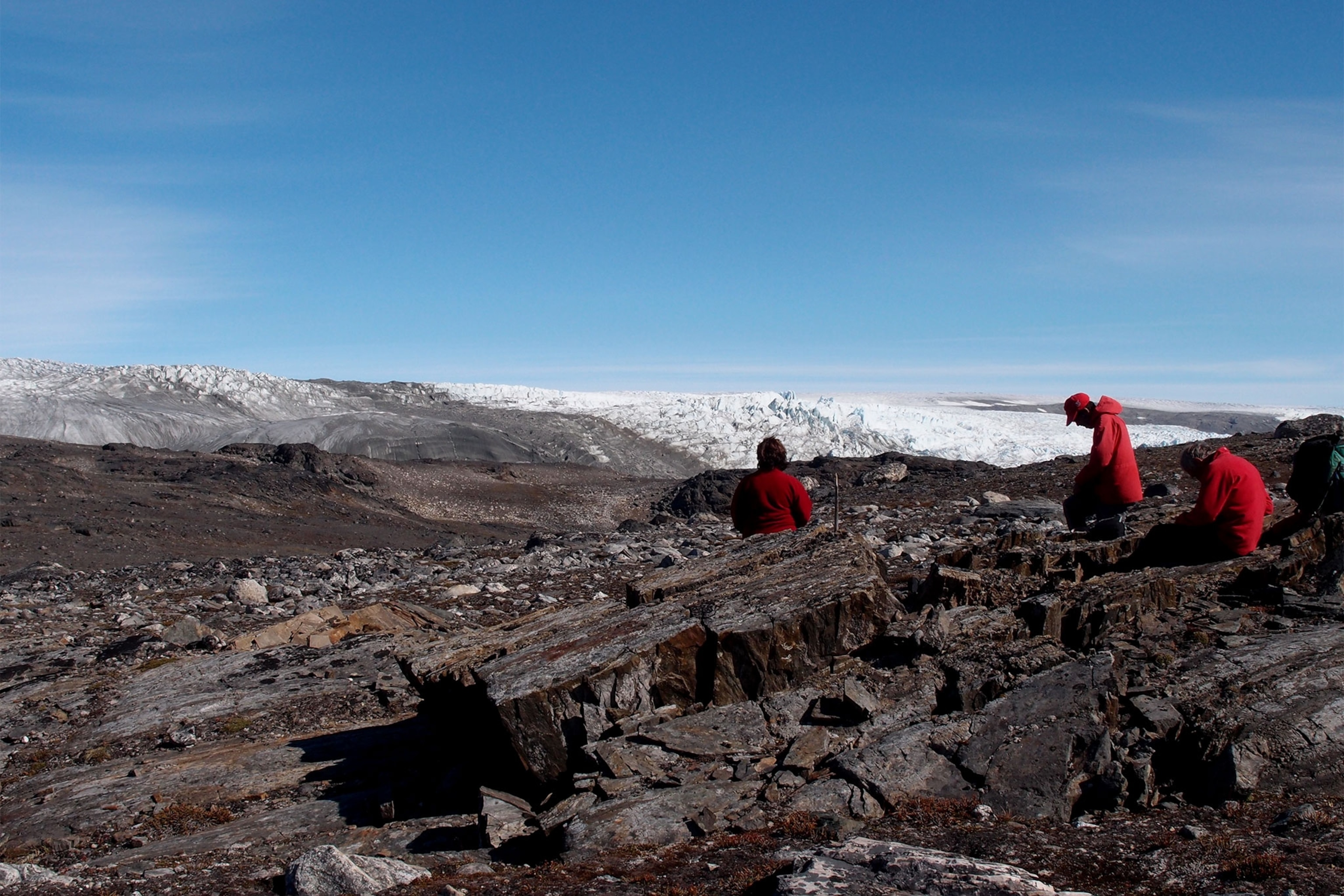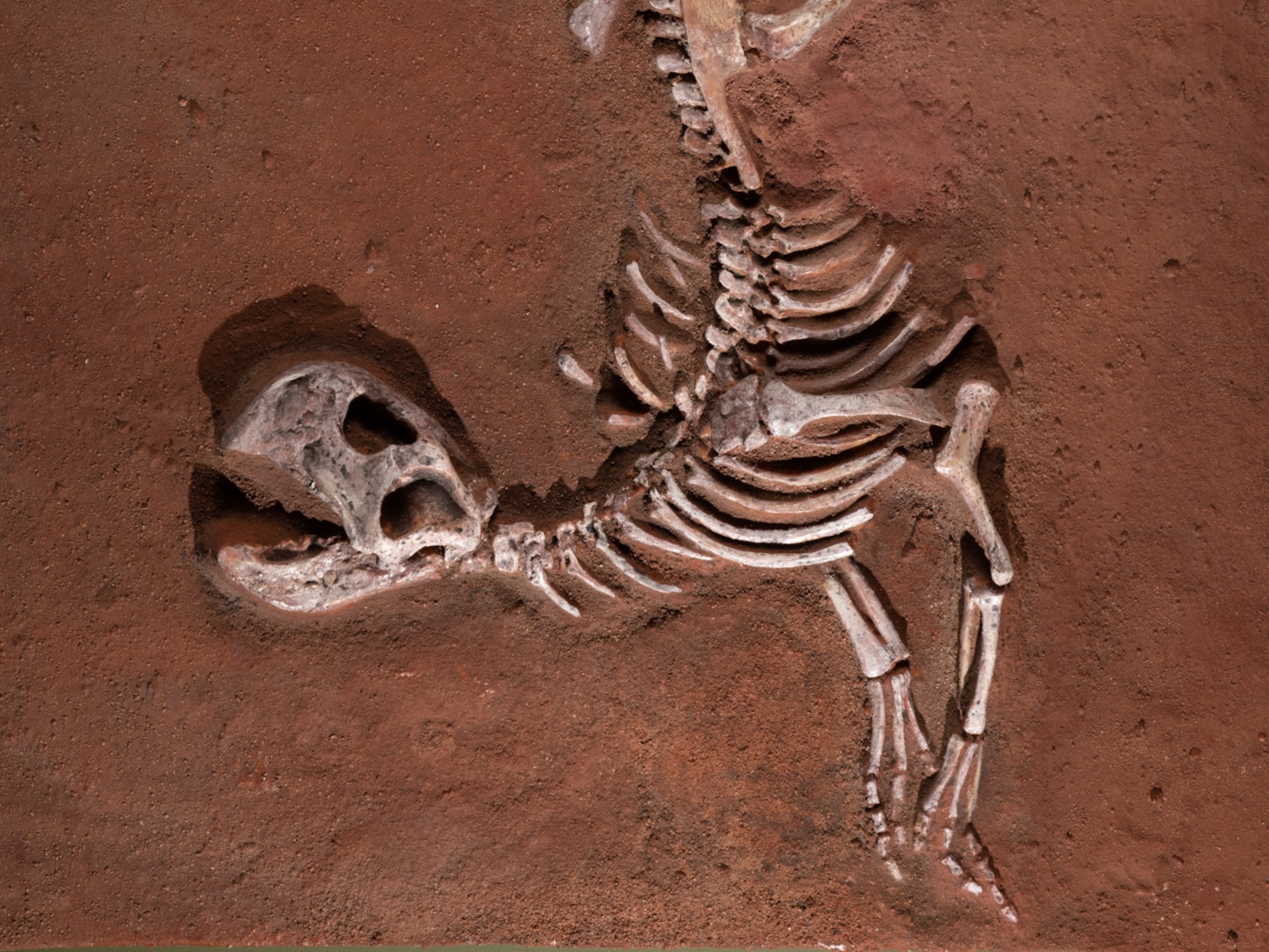
World’s Oldest Fossils Discovered Due to Climate Change
Ancient microbes from 3.7 billion years ago were only found due to melting ice in Greenland. What else is out there?
The oldest fossils yet known—an estimated 3.7 billion years old—were announced Wednesday, pushing back evidence of life on Earth by about 220 million years. These remains of ancient microbes were found in Greenland after they were exposed by melting ice—something that may become more common as the planet warms.
The fossils are known as stromatolites and are the evidence of ancient water-based bacterial colonies, which cemented sediments together into distinctive layers with carbonate. Before this new discovery, the oldest known fossils were 3.48-billion-year-old stromatolites found in Western Australia.
Published in Nature and led by the University of Wollongong's Professor Allen Nutman, the fossils were found in the world's oldest sedimentary rocks, in the Isua Greenstone Belt, along the edge of Greenland's ice cap.
Co-author Martin Van Kranendonk, director of the Australian Centre for Astrobiology, says the newly exposed outcrops in Greenland offered a unique opportunity to find the fossils.
“It points to a rapid emergence of life on Earth and supports the search for life in similarly ancient rocks on Mars,” Van Kranendonk said in a statement.
This week’s discovery is another reminder of the rich trove of ancient secrets that are likely to become exposed as glaciers, permafrost, and sea ice melt in a warming world.

In September 2012 an 11-year-old boy on Russia’s Taymyr Peninsula stumbled upon a well-preserved adolescent mammoth, after its limbs were protruding out of thawing ground. In fact, so many mammoth bones and tusks are appearing in the warming north that it has driven a market boom for collectors.
Archaeologists are searching for the next Ice Man in the Arctic and on mountains. Bog bodies may appear in Europe. Shipwrecks may become more accessible.
In fact, that’s exactly what happened last September, when two lost whaling ships were found in the Arctic off Alaska. The discovery would not have been possible without the unusual lack of sea ice that allowed the expedition.
Already, new technology is allowing scientists to better map what’s under the ice in Greenland, uncovering new clues for science. Things are changing fast, as melting hit a record pace in 2015.
Perhaps ironically, the global warming that may expose ancient treasures also threatens to make fossils out of many of today’s living things. A recent study estimated that if we keep burning all our fossil fuels, Earth will be 8°C (14.4°F) warmer by 2300, returning to the climate of 52 million years ago. In the Arctic, average temperatures would rise by 17°C (30.6°F).
Yet it only took 6°C (10.8°F) to lift the world out of the last ice age. In other words, the Earth would be so warm that palm trees could grow in Alaska and crocodiles could swim in the Arctic Ocean.



